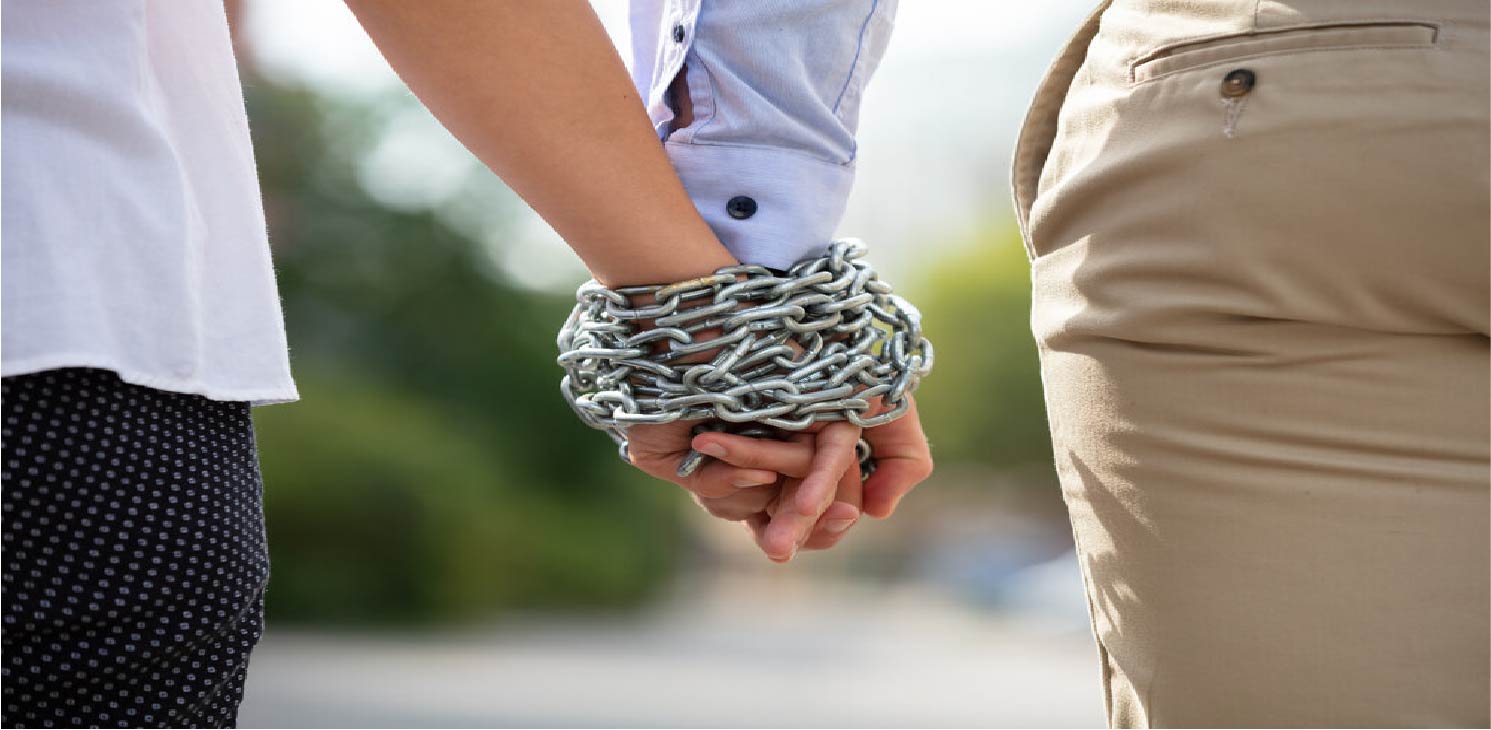The Nystrom & Associates provider consulted for this article is Tina Lee, LADC, Outpatient Therapist.
Codependency is when one partner sacrifices everything to please the other…including their identity. An unhealthy cycle/”relationship addiction” forms from this sacrifice. While all relationships involve some level of giving and taking, a codependent relationship revolves around consistent and problematic behaviors.
Tina Lee, Outpatient Therapist at Nystrom & Associates, describes codependency as “a belief built on lack of self-worth that is projected by serving others’ needs and wants for fulfillment.”
As a result, a codependent’s self-esteem and self-worth come from giving everything to their partner, who is happy to receive their offerings.
Related: How to Build Your Self-Esteem
What Causes Codependency?
Typically, codependency behaviors stem from childhood. A child’s emotions were either ignored or punished. This leads to low self-esteem and even shame.
Frequently, this is due to one or both parents not fulfilling their duty as caretakers. There are many factors that can cause this to be the case, including mental health conditions or addiction. Regardless of the circumstances, a child adapts to their environment by fulfilling their role in whatever capacity they can.
For instance, an older child might start to care for the needs of a younger sibling at an early age. An older child might learn to take care of household chores that are neglected, or care for their own parent directly.
While codependent behaviors might be adapted naturally for survival in childhood, in adulthood, these behaviors are not conducive to stable relationships.
Related: How Does Abuse Affect Mental Health?
What Are the Signs of Codependency?
There are a few key characteristics of a codependent relationship. These behaviors are usually consistent and interfere with the individual’s emotional health. Some important signs are the following:
- Low Self-Esteem: A person might believe that they are not worthy of happiness, which is often rooted in shame. Instead of valuing themselves, they might seek value from other people.
- Lack of Boundaries: Poor boundaries are a common sign of codependency. For instance, they are willing to drop everything for the other person, have a tough time saying no to their requests, and silence their own needs to avoid upsetting others.
- Enabling: Codependent people might make excuses for their loved one frequently. For example, if a loved one misses work due to substance abuse, they might call their boss for them and say they won’t be in under the guise that they are ill. In other words, they help their loved one avoid the consequences of their actions.
- Control Issues: Possessive or controlling behavior can result from a codependent who links their self-esteem to another person.
If you are seeking out or maintaining relationships that are not fulfilling, you may be codependent.
For more signs of codependency, visit the codependency specialty page.
Can Codependency Be Treated?
Codependency is not a mental health condition or personality disorder. However, a therapist can address codependency in therapy. A codependent can learn healthy communication and interpersonal skills with a mental health professional. In addition, it can also help address the root cause of why these tendencies developed in the first place. Another option to reduce codependency is couple’s therapy.
Similarly, if part of the relationship revolves around substance abuse, it’s critical to receive proper treatment from a mental health professional.
Related: What is Narcissistic Personality Disorder?
A Word From Nystrom & Associates
If you’d like to address codependency, therapy is a great start. Nystrom & Associates offers individual, couples, and family therapy for all ages. Call 1-844-NYSTROM or make an appointment online.
Related: How Therapy Helps With Depression
Source: Nystrom & Associates


